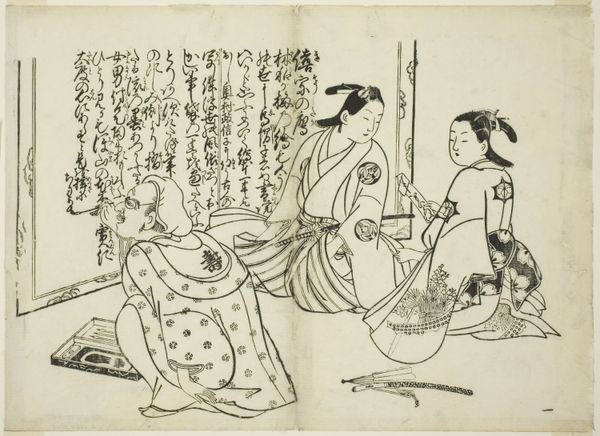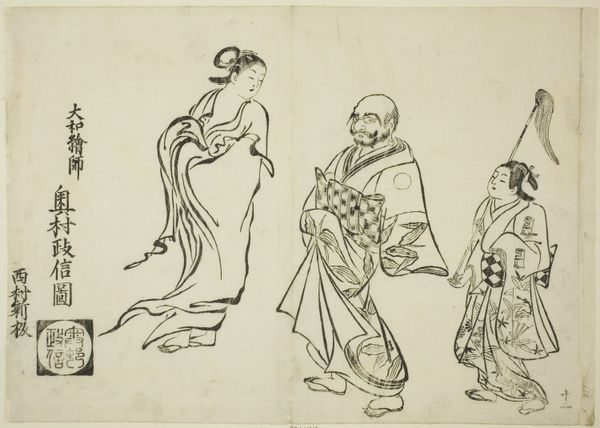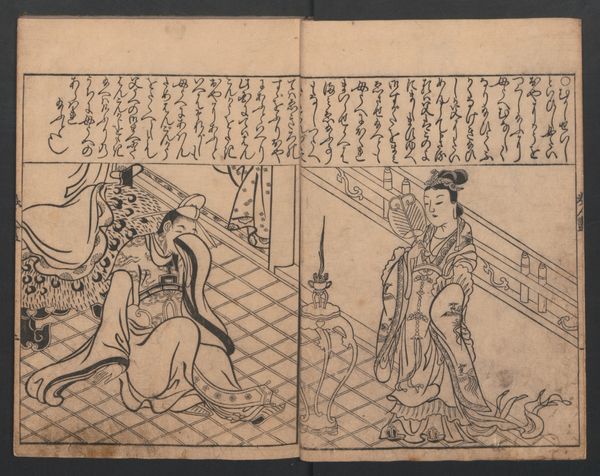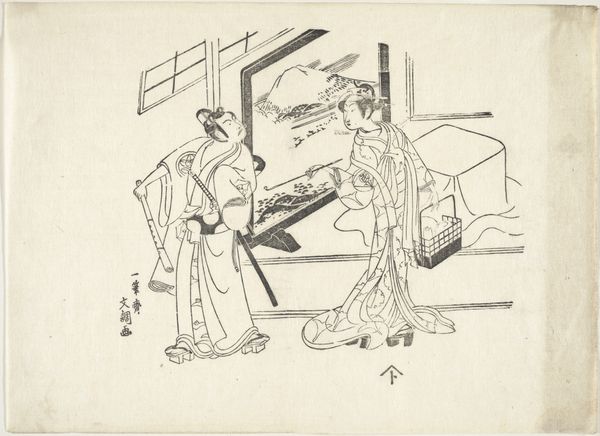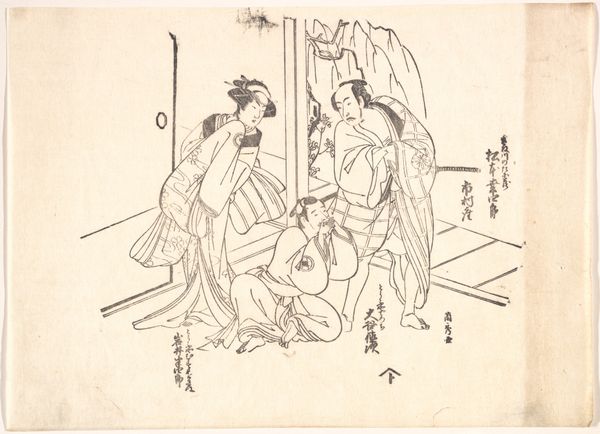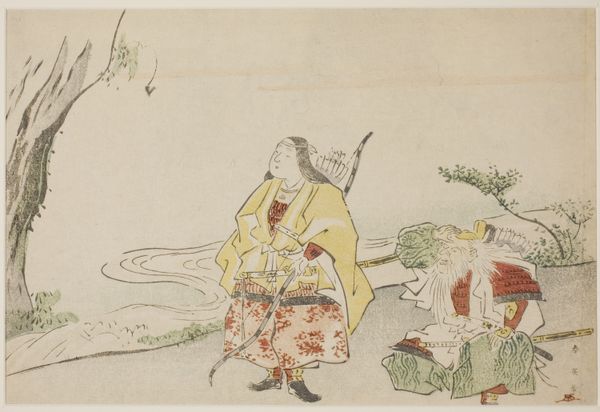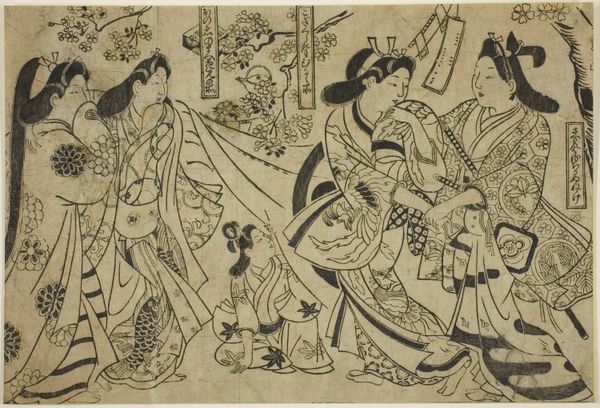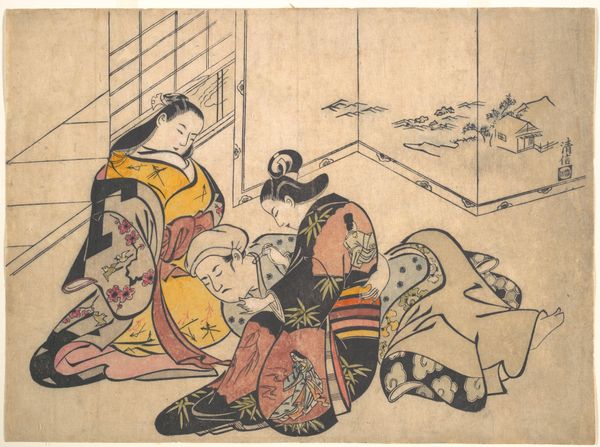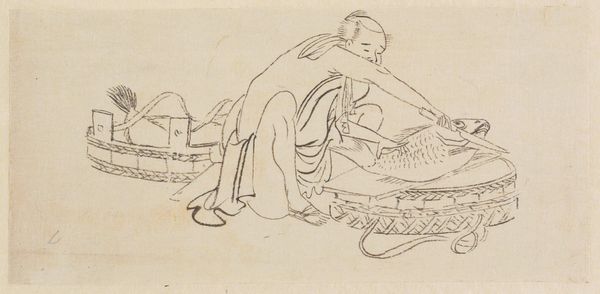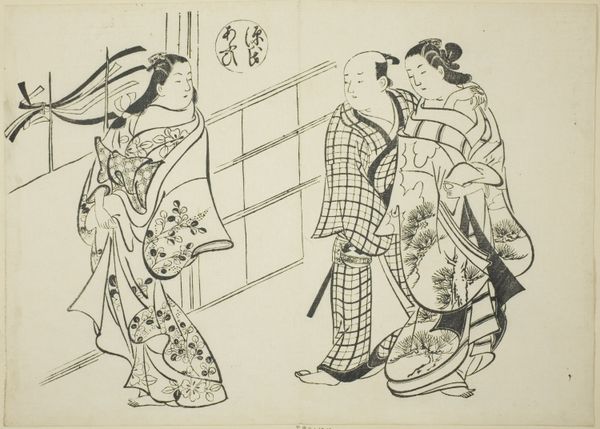
Daikoku revealing the contents of Hotei's bag, no. 2 from the series of 12 prints c. 1708
0:00
0:00
print, paper, ink, woodblock-print
#
ink drawing
#
narrative-art
# print
#
asian-art
#
ukiyo-e
#
figuration
#
paper
#
ink
#
woodblock-print
#
line
Dimensions: 26.7 × 36.9 cm
Copyright: Public Domain
Curator: So, here we have “Daikoku revealing the contents of Hotei's bag, no. 2 from the series of 12 prints,” made around 1708 by Okumura Masanobu. Currently, it lives at the Art Institute of Chicago. It's a Japanese woodblock print in ink on paper. Editor: My first impression is whimsical. It feels like a peek into a secret world, almost dreamlike with the swirling lines creating these distinct characters. It's stark, yet dynamic. Curator: Indeed. Masanobu was a pioneer. His works are known for their distinct use of line and the narrative quality, quite innovative for Ukiyo-e prints of the period. We’re seeing a story unfold. The seven lucky gods theme was always quite popular, and you can see those details and how it emerges on this print. Editor: Absolutely, and the process itself! Imagine the labor that went into carving those delicate lines into woodblocks. Think about the artisan workshops producing paper specifically designed to take ink in just the right way, almost becoming a stage for economic as well as religious processes. Curator: The contrast is what holds me, especially in the expressions. The kind Daikoku and the rather bemused look on the woman. One wonders what treasure—or trick—is about to be revealed! There’s also a feeling of a communal, festive energy that is characteristic of Japanese folk traditions. Editor: The composition leads me to focus on the rice bale, in particular; such careful details elevate that mundane object. Masanobu presents these deities, Daikoku and Hotei as patrons of labour as well as abundance. Curator: It's interesting how he flattens the space, something often seen in Japanese prints, creating this sense of immediacy, drawing you right into the scene and those facial expressions I love so much. It is this closeness to its audience that I enjoy about these early Ukiyo-e prints. Editor: Ultimately, thinking about it this print, makes you question boundaries, I mean those around “high art” and “craft”, “everyday” versus “sacred” – so prevalent at the time. And seeing these interactions of labor and meaning reminds one of the communities who engaged with these prints beyond purely aesthetic enjoyment. Curator: A small peek into a whole world that is quite layered when you come to consider it all! Editor: It does, inviting us to delve beneath the surface to appreciate how deeply interwoven materiality, culture, and everyday life were at this moment.
Comments
No comments
Be the first to comment and join the conversation on the ultimate creative platform.
